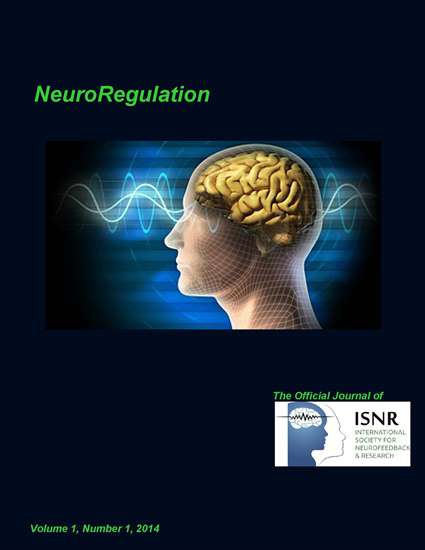The Coordinated Allocation of Resource (CAR) Electrophysiological Patterns of Recalling Names of Faces in Children, Adolescents and Adults and the Central Processing Unit (CPU) of the Brain
DOI:
https://doi.org/10.15540/nr.1.1.87Keywords:
quantitative EEG, memory, memory for names of faces, name memory, coordinated allocation of resource model (CAR), central processing unit (CPU), encodingAbstract
The quantitative EEG (QEEG) has proven to be an important methodology in the understanding of brain functioning. The Coordinated Allocation of Resource (CAR) model maintains that cognitive effectiveness depends on the employment of a specific set of resources for specific cognitive tasks, which overlap in some situations. The model employs the flashlight metaphor in understanding the coherence and phase relations between locations. The metaphor asserts that each location can function as a flashlight that sends out a “beam” to the other locations within a frequency. The “beam” can involve all the other locations or be a mini-flashlight that involves only selected locations. The task of recalling names of faces was examined in the context of the CAR model.
The developmental changes that occur during the encoding of names of faces include increases in diffusely located communication connections involving theta (4–8 Hz) and alpha (8–13 Hz), increases in the relative power values of the beta variables (13–64 Hz), peak frequency of beta1 (13–32 Hz) and alpha, decreases in communication patterns involving the beta2 (32–64 Hz) and delta (0–4 Hz) frequencies as well as decreasing values of variables involving the lower frequencies (delta, theta), relative power values of alpha and magnitudes of alpha, beta2 and peak amplitudes of beta2.
The face-name task is both a verbal and visual task as the participant is hearing the name while he looks at the photograph. Variables that relate to success during the encoding task involve diffuse increases in flashlight activity from F7 and T3 across all frequencies to and between central locations. The QEEG variables that relate to immediate and delayed recall success involve flashlights from T3 across 4 frequencies, F7 involving 3 frequencies and the appearance of a heuristic “central processing unit” involving frontal (F3, Fz, F4), central (C3, Cz, C4) and posterior (P3, Pz, P4) locations.
Downloads
Issue
Section
License
Authors who publish with this journal agree to the following terms:- Authors retain copyright and grant the journal right of first publication with the work simultaneously licensed under a Creative Commons Attribution License (CC-BY) that allows others to share the work with an acknowledgement of the work's authorship and initial publication in this journal.
- Authors are able to enter into separate, additional contractual arrangements for the non-exclusive distribution of the journal's published version of the work (e.g., post it to an institutional repository or publish it in a book), with an acknowledgement of its initial publication in this journal.
- Authors are permitted and encouraged to post their work online (e.g., in institutional repositories or on their website) prior to and during the submission process, as it can lead to productive exchanges, as well as earlier and greater citation of published work (See The Effect of Open Access).











